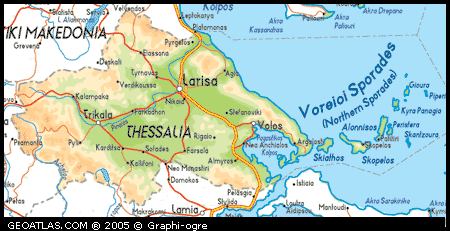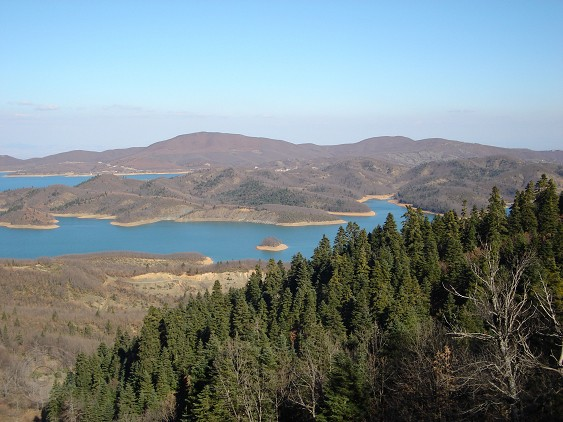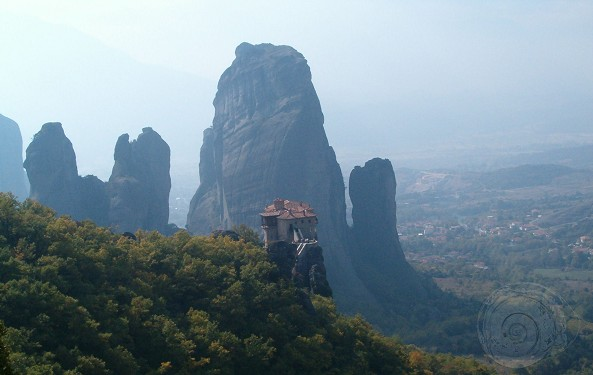
Considered to be a place with a significant history and tradition is the geographical region of Thessaly, which offers magnificent geophysical beauty, and a diversity of form in its terrain. It is situated in the heart of Greece and borders with Macedonia and Ipiro, extending as far as Sterea Ellada [central mainland Greece] in the south, overwhelming the traveler who visits, with images and scenery.
Its history ranges from the prehistoric age to the more recent ages. Near Larissa, and in particular by the banks of the River Pinio, Paleolithic tools as well as fossilized animal remains, belonging to the period [100,000-50,000 B.C] have been found. In Greek mythology, Thessaly was the home of the Centaur and the inaugural location for the Argonaut Crusade in Jason’s adventure to find the Golden Fleece.

The prefectures of Magnesia, Larissa, Karditsa and Trikala belong to Thessaly. Thessaly is the agricultural district with the most fertile terrain in Greece. It has rivers, mountains, an abundance of springs, elements with interchange austerely, giving way to the beauty of the other. Thessaly comprises one of the most beautiful and impressive areas within Greece, which during the last few years, tends to attract all the more tourists, who want to admire the complete harmonious relationship of man with nature.

General Information
The province of Thessalia covers much of east-central Greece. From high mountains to beaches and modern city’s the region of Thessalia has them all in abundance. Mounts Pindus, Olympus, Pelion, Othrys, Ossa and Agrapha surround the fertile plain of Thessalia in central Greece. The River Pinios, coming down from the western slopes of Pindus, cuts Thessalia in two, passes through the valley of Tempi and meets the sea.
On the western edge of the plain of Thessalia one comes upon a unique phenomenon of nature, 24 perpendicular rocks on which about 600 years ago Byzantine monks chose to worship God and built Meteora, their monastic community. How they came to build these monasteries on the top of these virtually inaccessible rocks is a subject of fascination for pilgrims and visitors alike.
History
Thessalia has close links with the mythical past of Greece. Olympus, home of the immortal gods and land of the Centaurs is only one of the many areas. Archaeologists have unearthed the remains of Mycenaean settlements at Iolcos, Dimini and Sesklo. In ancient Greek times, the region came under the rule of barons who controlled the region and later took control of the Amphictyonic league who at that time controlled much of central and northern Greece.
During the 4th century BC, the region of Thessalia became dependent to the region of Macedonia. The Romans formally incorporated Thessalia into the province of Macedonia, in circa 300 AD; Thessalia became a separate province with its capital at Larissa. In the years following, the region has been under the control of many conquerors among them the Byzantines and Turks.




















